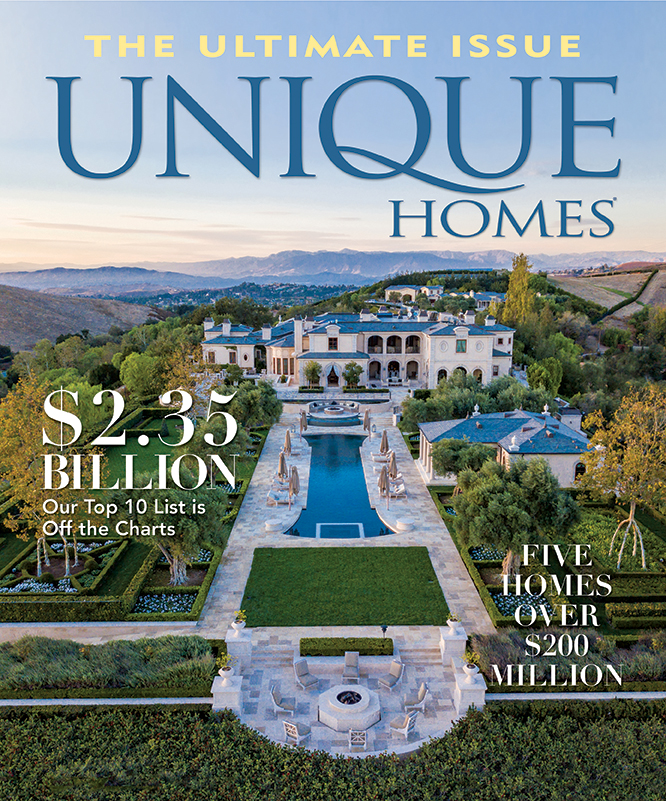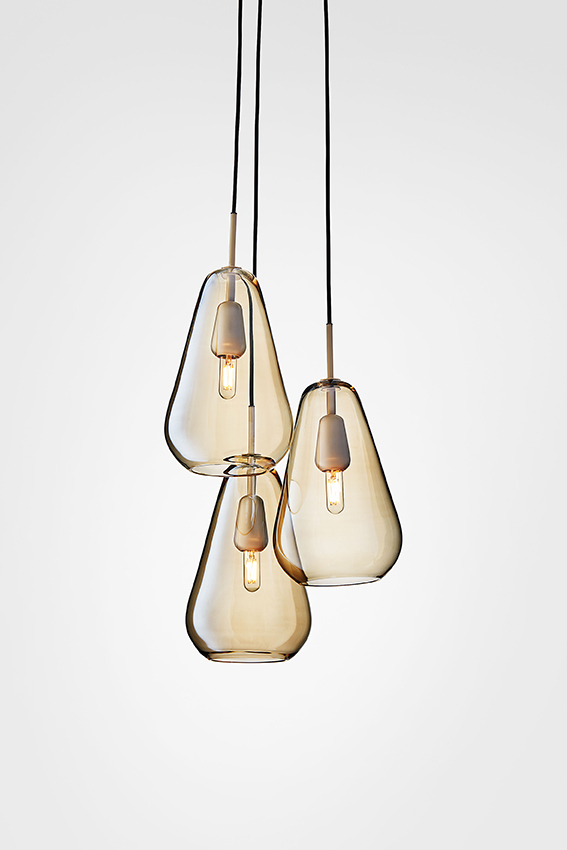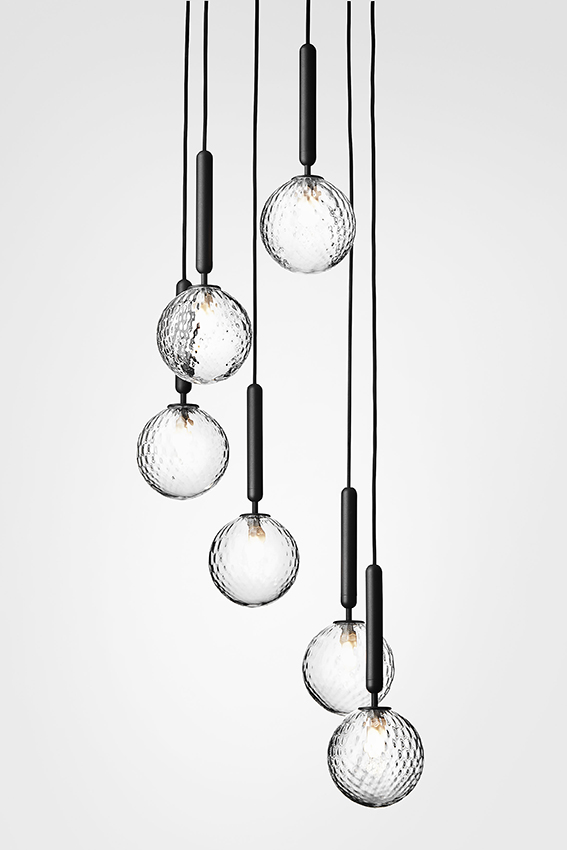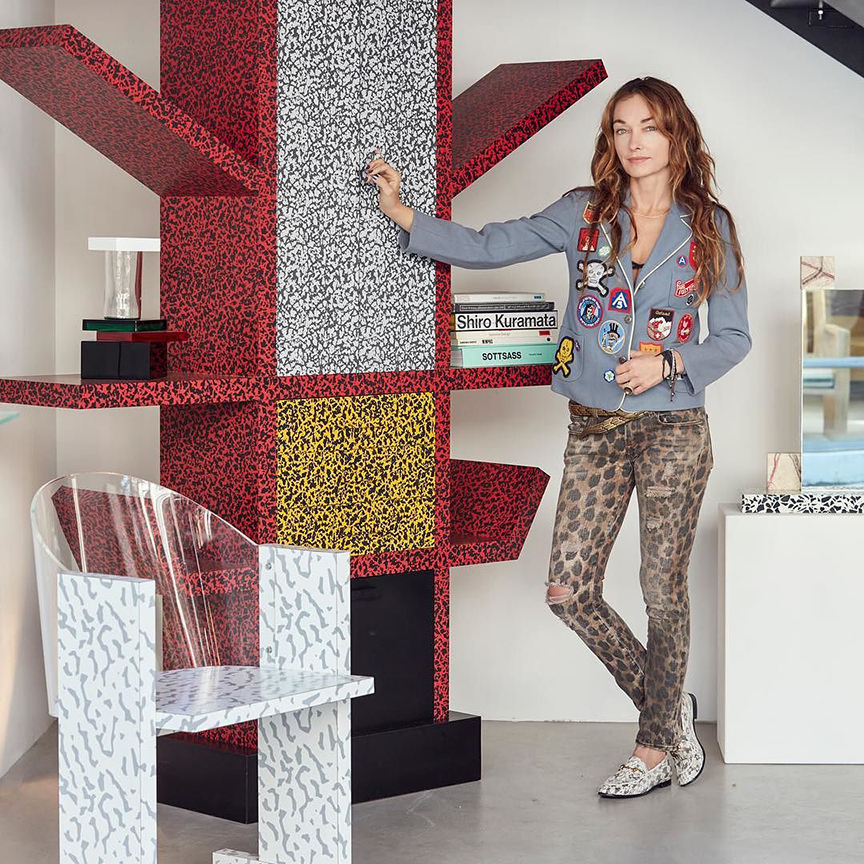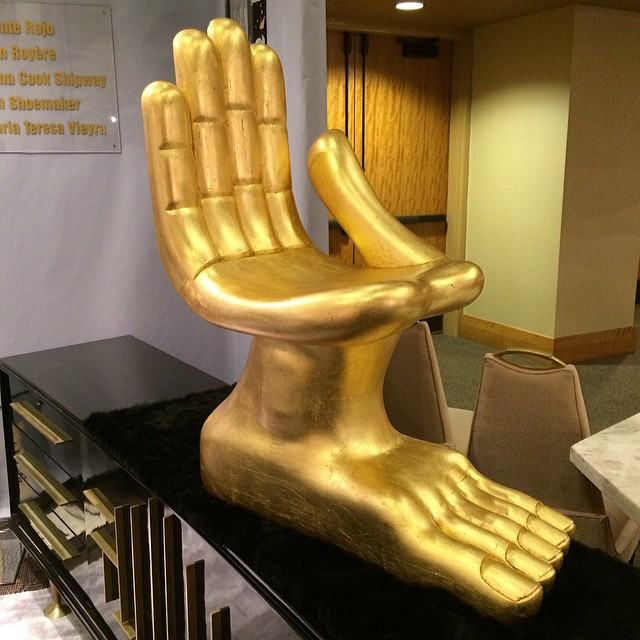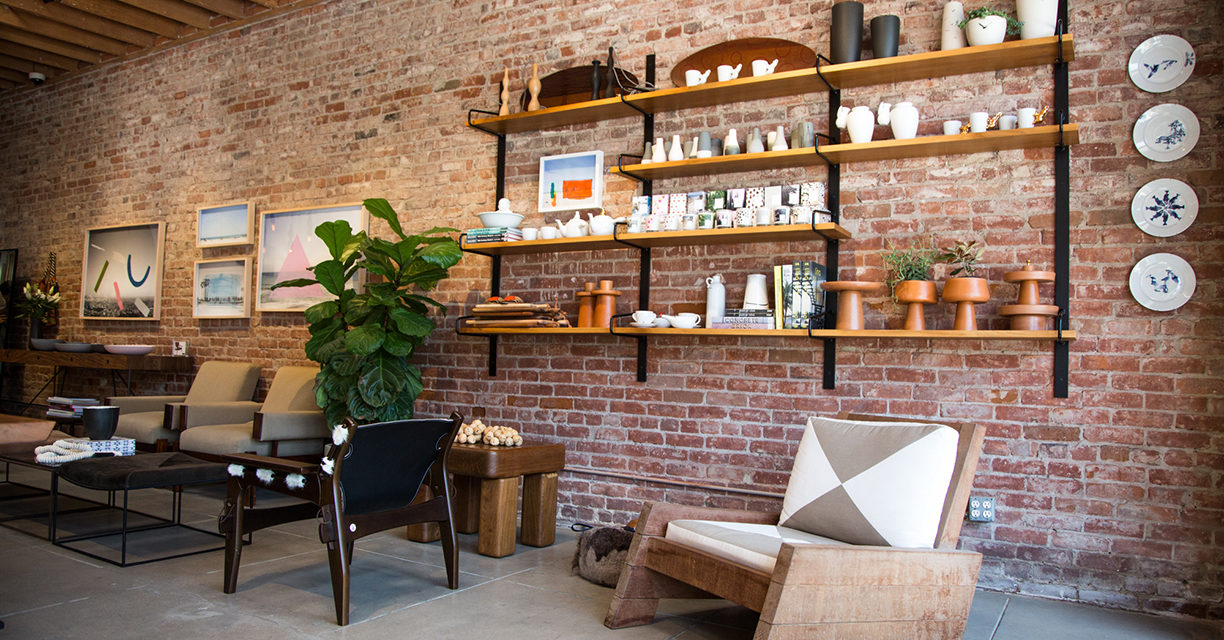
Demand for Mid-Century Modern furniture continues to be strong, but while Scandinavia steals the spotlight, savvy collectors are heading south — to Brazil.
By Roger Grody
With its sexy, timeless aesthetic, Mid-Century Modern design, whether architecture or home furnishings, has been hot for decades. Pieces from Europe and the U.S. dominate the market, but some incredible work from Brazilian designers has gone relatively unnoticed. The world is discovering that Oscar Niemeyer, Brazil’s most famous modernist, had plenty of company.
“I believe the mix of cultures that make Brazil — we are, after all, a country built by immigrants — give us a particular charm, a natural flair,” says Carlos Junqueira, founder and president of Espasso. A preeminent source for Mid-Century Modern Brazilian art, furniture and accessories, the New York-based gallery has branches in Miami and London. “With globalization, Brazilian designers have begun developing a strong design identity,” says Junqueira, explaining that the appeal of the genre transcends borders and cultures.
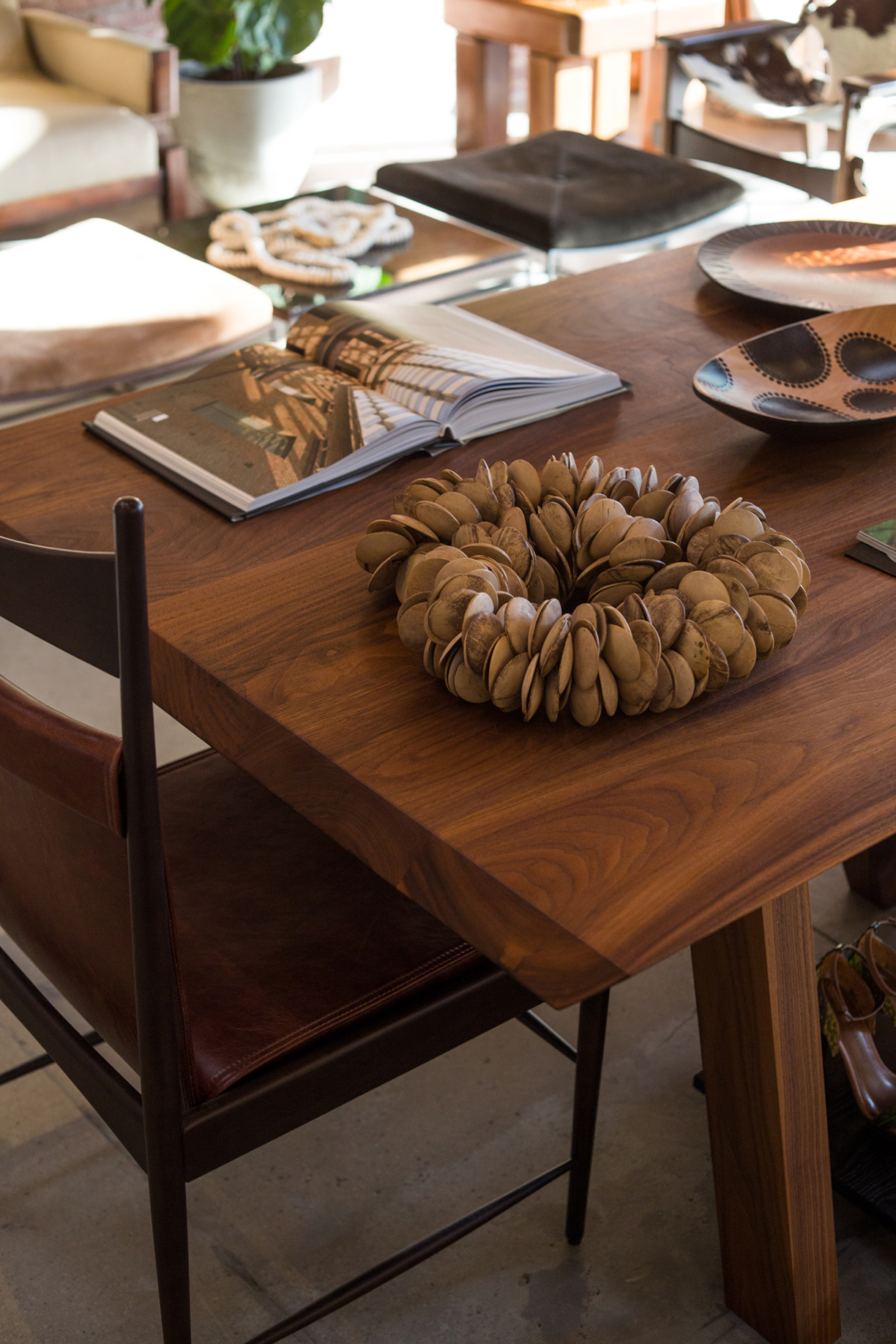

The Dinamarquesa armchair was designed by Polish-born Jorge Zalszupin, one of the Brazilians that comprised a robust creative community in the South American nation after World War II. When Niemeyer was designing Brazil’s new national capital of Brasilia, he recruited Zalszupin to create furniture for the futuristic governmental complex.
Featuring leather cushions supported by a sleek, delicate frame of imbuia (a Brazilian wood resembling walnut), the 1959 chair reflects the Mid-Century Modern aesthetic that was sweeping the globe and, in fact, Dinamarquesa means “Danish” in Portuguese. When viewing these timeless pieces of Brazilian furniture, it is easy to forget that some of them were designed more than 60 years ago.
The Asturias rocking chair is personally handcrafted from sustainable materials by São Paulo designer Carlos Motta. It is a study in simplicity but a dramatic and formidable piece of furniture, with bold red-and-olive cushions embedded in a solid, planked frame. Through its use of reclaimed itauba-preta wood and minimal machine cuts to reduce its environmental impact, this indoor-outdoor chair has been lauded for both design and sustainability.
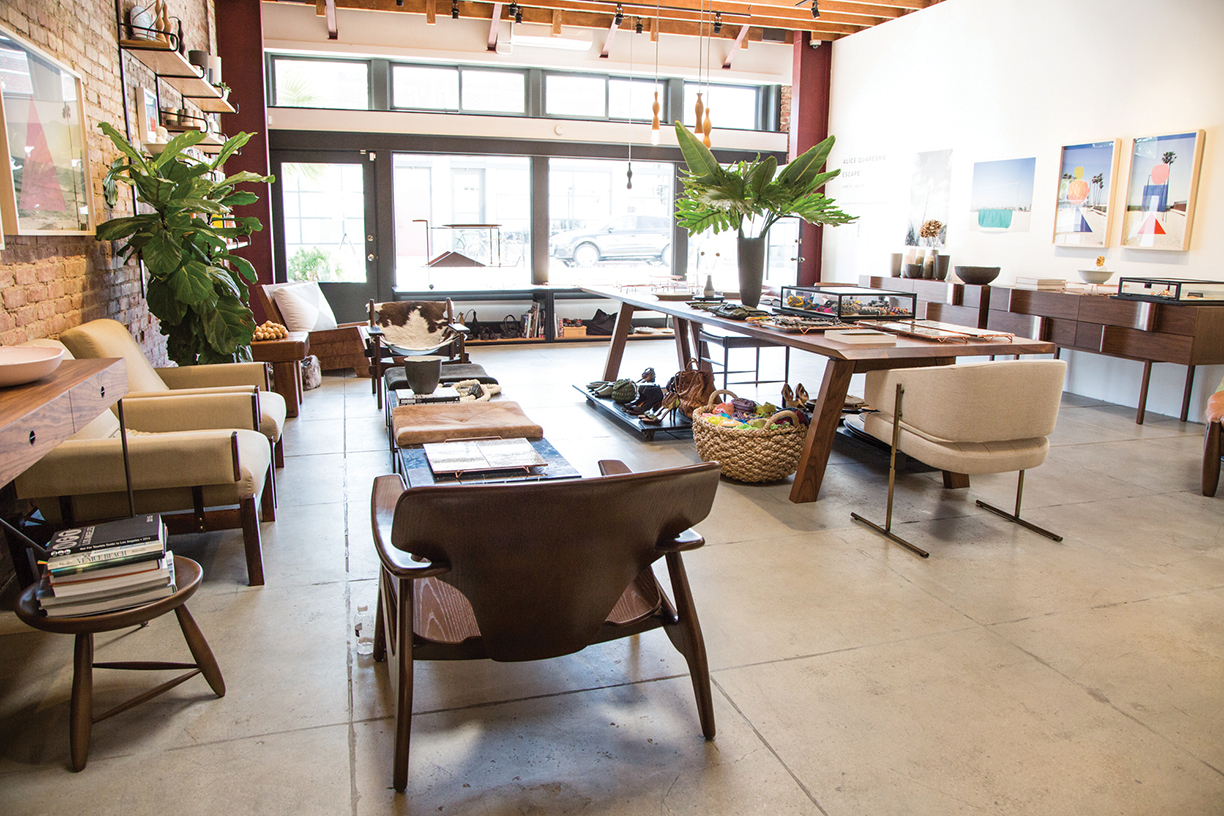
From contemporary São Paulo-based architect Arthur Casas is the Ondas sideboard, which features a unique rippled edge. Crafted from American walnut, this piece is a departure from the clean, angular features that characterized the structures Casas designed earlier in his career.
On a quiet stretch of Pacific Avenue in Los Angeles’ once-bohemian, now-trendy neighborhood of Venice is Le Magazyn, where founder Ana Kozak celebrates design of all kinds from her native Brazil. In addition to shoes, jewelry and art is a collection of Mid-Century furniture designed by some of her country’s great modernists.
Kozak, who moved with her family from São Paulo to L.A. seven years ago, has transformed a 1,000-square-foot storefront into a combination furniture showroom, fashion boutique and exhibition space. Pendant lamps from São Paulo’s Estudio Manus hang from exposed beams while merchandise is displayed on a walnut table designed by Brazilian modernist Claudia Moreira.
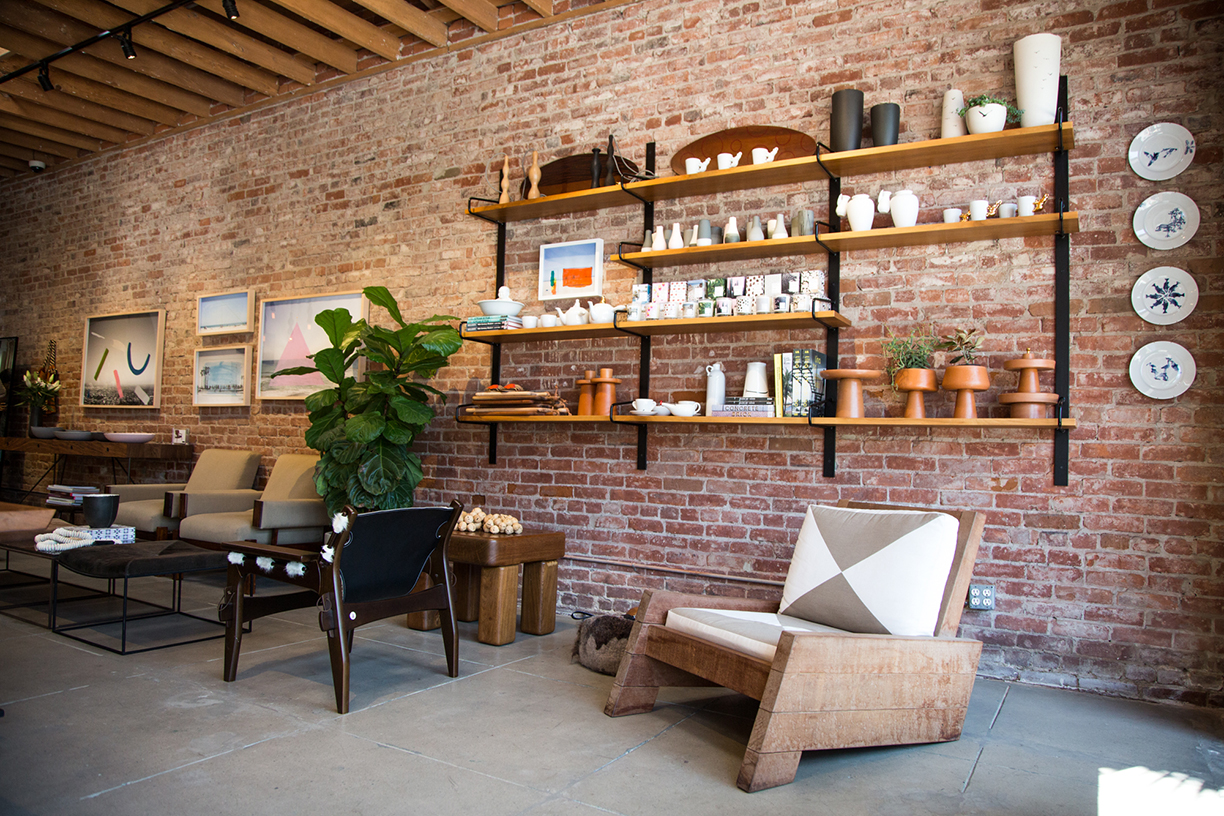
Because Le Magazyn is Espasso’s representative on the West Coast, Kozak is able to fill her intimate showroom with a selection of pieces that intrigue the professional designers, local homeowners and tourists who drop by her store. “For many years the reference point for this era of furniture was Denmark, but now people searching for something new and different are discovering Brazilian Mid-Century,” says Kozak.
Le Magazyn’s walls are lined with photos from the widely published Brazilian photographer Claudio Edinger, whose aerials of a smoggy São Paulo skyline are hauntingly alluring. The work of architect/photographer Leonardo Finotti, another Brazilian fascinated by urban aerial shots, is offered through Espasso.
Atlanta interior designer Perry Walter discovered Brazilian Mid-Century Modern furniture when he was searching for a compelling coffee table for a client. While that commission involved a modern townhouse, Walter believes these Brazilian pieces can also be effective in more traditional settings.
“I think each piece is unique and can be displayed like a work of art,” says the designer, who appreciates how the style’s minimalism is warmed through the use of exotic woods and organic forms.
“The value of Brazilian furniture has been growing considerably as its recognition and desirability increases,” reports Espasso’s Junqueira, who notes that as prices rise knockoffs naturally emerge. “I’m extra-careful and attentive to every single detail related to the work I represent and the vintage selection I offer,” says the gallery founder, pleased to see Brazilian design internationally relevant and appreciated.

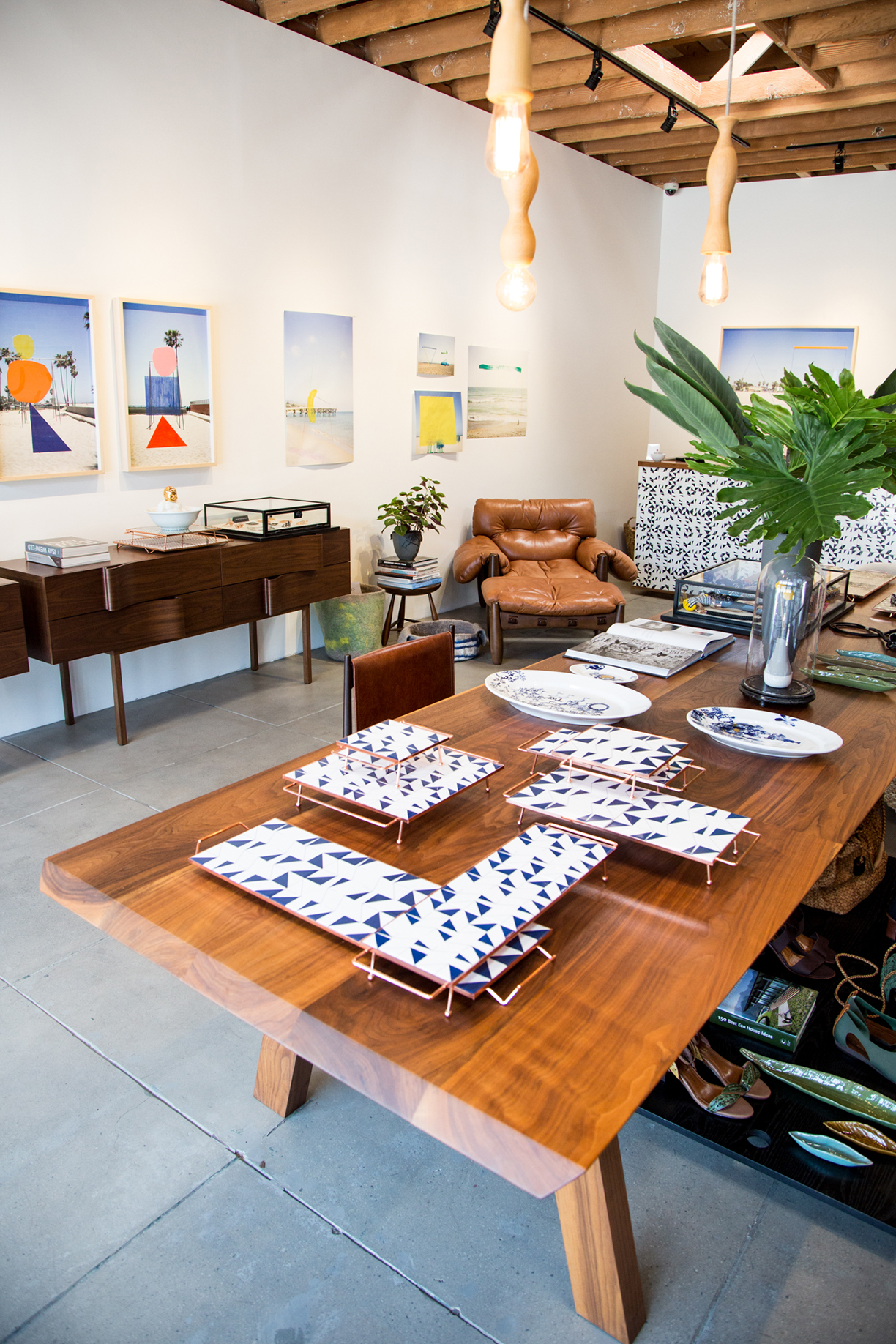
Photos courtesy of le magazyn
Partnering with icons from the design and architecture industry, CITCO — an Italian stone company — has created an impressive home and office collection.
Created in 1990, CITCO continues to reimagine the perception of marble with revolutionary partnerships alongside Zaha Hadid Design, Ora ïto, Daniel Libeskind and Arik Levy.
Zaha Hadid Design
Zaha Hadid Design presents the Malea Coffee Table, with the idea of a spiraling seashell at the heart of the design. Despite being carved from a block of onyx, the table appears malleable with sweeping lines and fluid shape. The transparent acrylic material that is paired with the onyx adds to the complexity of the piece.
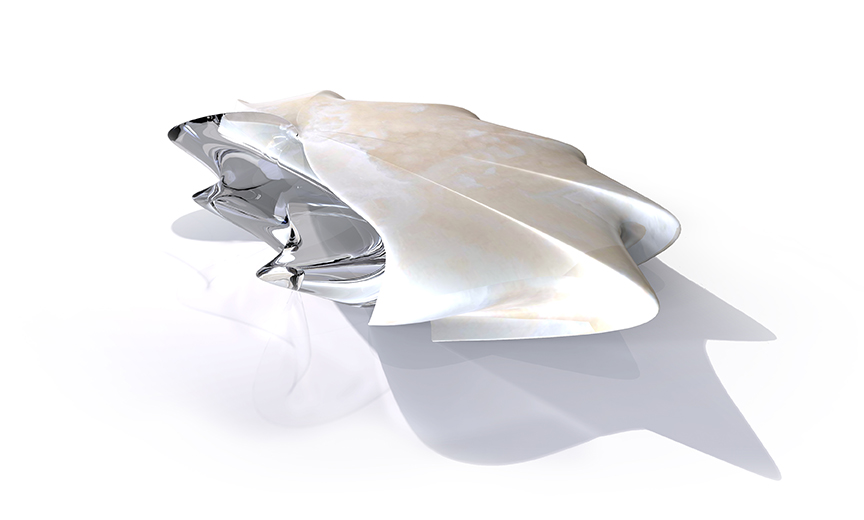
Ora ïto
The Isa Coffee Table, designed by Ora ïto, also has a sculptural look with bold and curving lines that draw the eye. The table is reminiscent of a table designed by Isamu Noguchi in 1947, but with a clear sense of the new designer.
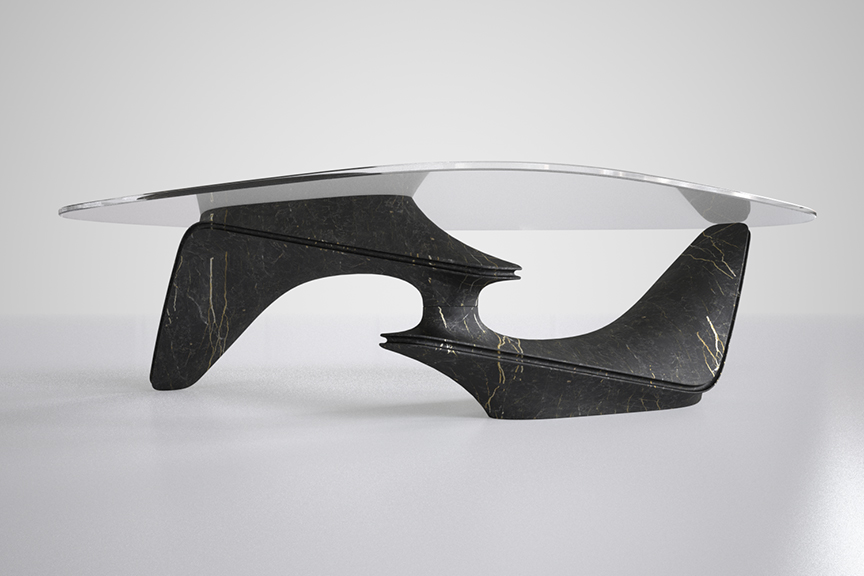
Arik Levy
Arik Levy brings us Negative Spaces, a new series of vases that are available in three different shapes and sizes. With the impression that the pieces have movement, the vases work together to create an energy and depth. The materials are semi-polished Onice Cappuccino, capturing a sense of warmth in nature.
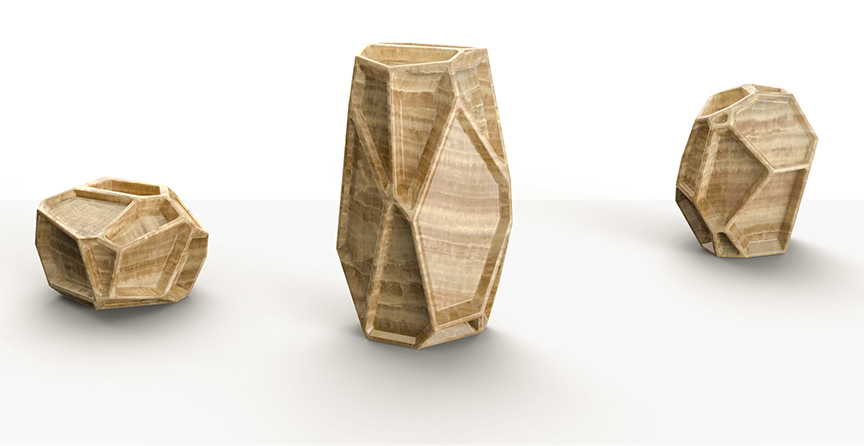
Daniel Libeskind
Using sculpture as inspiration for furniture, Daniel Libeskind reveals his Endless Side Table. The piece plays with perception and is multi-functional, quenching the thirst for art and function. A unique viewpoint and manipulation of space, light, and lines have brought a three-dimensional spiral into the home and office space.
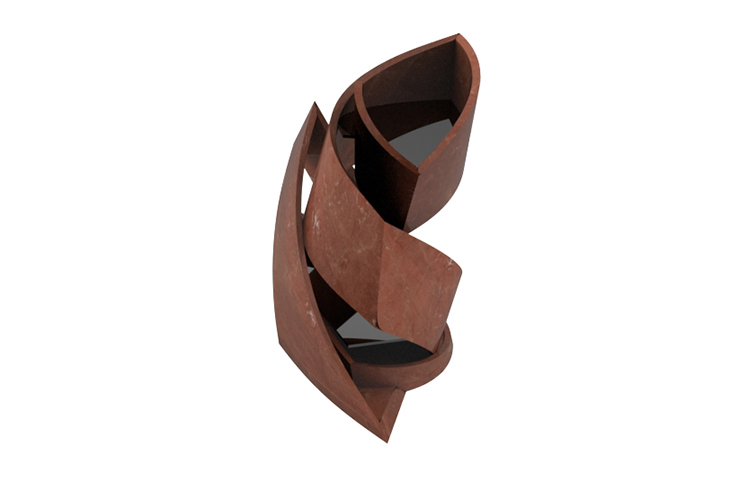
Photos courtesy of www.citco.it
Recently released exclusively with SUITENY, the design brand Nuura is known for creating aesthetic and select lighting options that reflect the riches and joy found in Nordic nature. With the chandelier as a central focus, Nuura offers lighting collections that enrich the room and complete the interior in both private homes and public spaces. By combining delicate design with state-of-the-art technology, the designers strive to create unique quality lighting that has a positive impact on our wellbeing.
“The meaning of Nuura is light and honour,” says a brand representative. “From our base in Denmark, we are inspired by the Nordic light — an everlasting source of inspiration. We wish that our lighting collections will spread life and joy.”
All photos courtesy SUITENY.
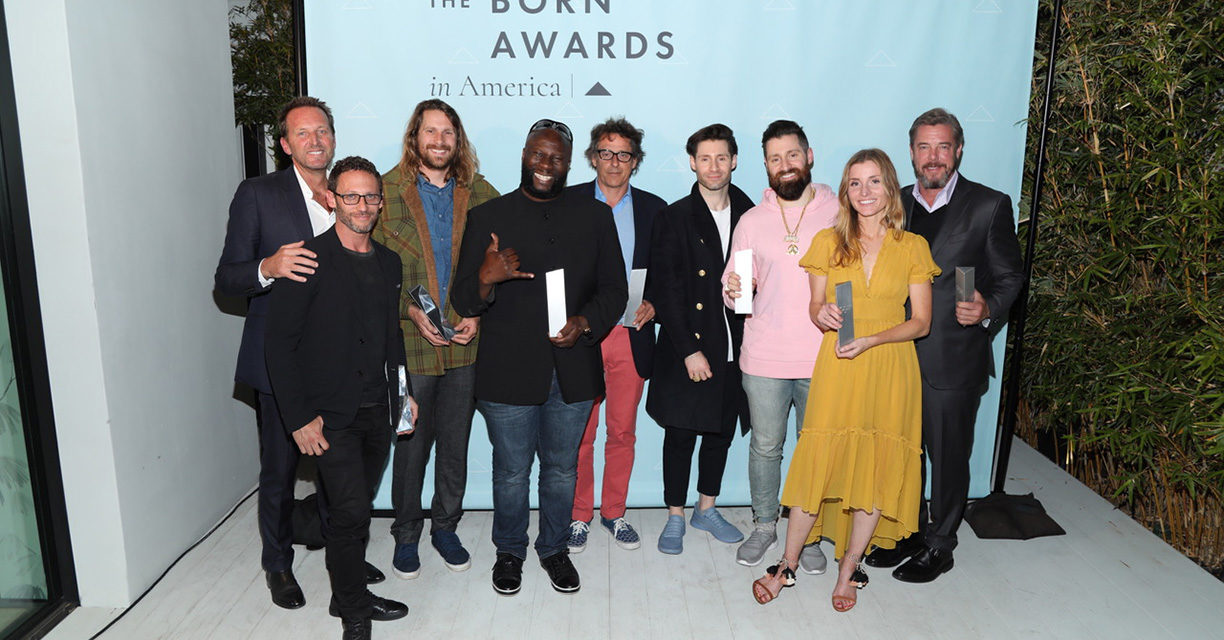
2018 Winners in Six Categories Announced at Private Dinner at Beverly Hills Home
Founded in Europe in 2010 by Jean-Christophe Chopin (architect of E-Trade Europe), the BORN Awards, which celebrate creative achievements across multiple categories of the design-led lifestyle, landed on American shores. The BORNS are the first U.S.-based regional competition recognizing work that strives to enhance people’s lives through aesthetics and functionality. All of the winners, both emerging and established men and women, invented something beautiful and carried their visions to society.
Operating in six countries, the BORN Awards are the premier platform for honoring and empowering artists while providing exposure to some of the world’s most influential retailers, brands and industry professionals. The winners from each region, now including the U.S., are invited to present their creations during an exclusive exhibition at Milan Design Week each year, and to participate in The BORN Conversations, an exclusive series of fireside chats held with renowned thought-leaders about the intersection of creativity and business. Once all of the regional winners are selected, they will go on to compete against one another in the global final held in London each year.
The theme of the 2018 competition is “Peerless,” which aims to elevate singular creations that combine functionality and aesthetics in one of six categories: Architecture, Technology, Home, Leisure, Sport and Mobility. Additionally, The BORN Awards partnered with two industry leaders to bestow special prizes – Tastemade, a global, digital food, home and travel network, will award the best in “Food + Design,” while Machinima, a leading gaming platform, will select the best in “Immersive Storytelling + Narrative Design In Gaming.”
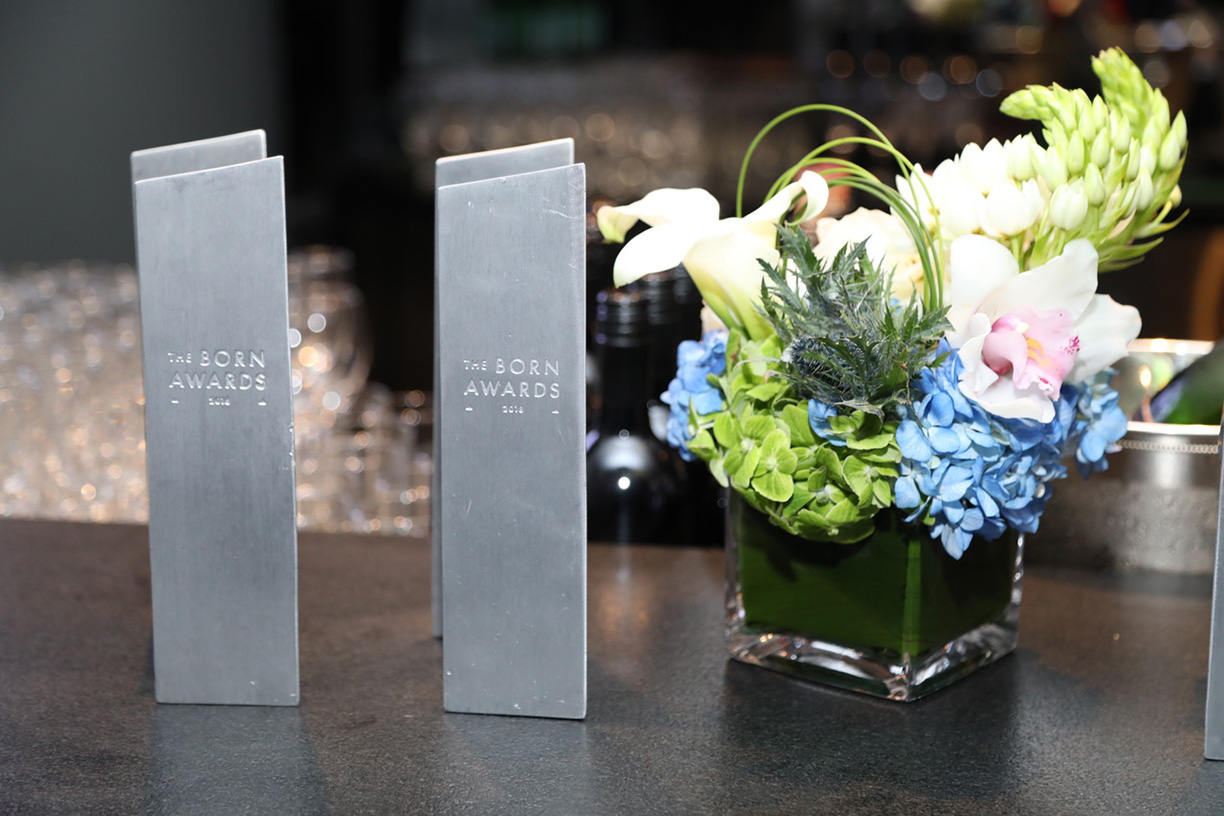
The 2018 BORN Award Winners are:
Architecture & Design: Jacques Garcia and Sydell Group, NoMad Hotel, Los Angeles
Technology & Innovation: Scott Painter, CEO & Founder, Fair.com
Home: Noah Kaplan, Lena Sound Sculpture by LEON Speakers
Sports: RabbitsFoot Surfboard, Ryan Lovelace based on an original idea by Dan Malloy
Leisure: Ryan & Adam Goldston, Athletic Propulsion Labs
Mobility: Stuart Parr,, MV AUGUSTA
Tastemade Prize For Food + Design: Jeni Britton Bauer, Jeni’s Splendid Ice Creams
Machinima Prize For Immersive Storytelling + Narrative Design In Gaming: Guerrilla Games, Horizon Zero Dawn
Photos courtesy of EM50 Communications
Open to all pathways of creativity, the industry of design is ever-changing and consistently relies upon innovative visionaries who see the world in different ways. A new area of design that has the potential to make an impact is based around the philosophy of wabi-sabi.
Artist and author Leonard Koren of “Wabi-Sabi: for Artists, Designers, Poets & Philosophers” describes the philosophy as “a beauty of things imperfect, impermanent, and incomplete,” or the opposite of things that are perfect, everlasting and monumental.
The author, who lived on and off in Japan for 20 years before writing his first book on the subject, first learned the terms “wabi” and “sabi” when studying the Japanese tea ceremony, and often heard his designer and artist friends use “wabi-sabi” in conversation.
“I knew what they meant but when I looked the term up in Japanese dictionaries — and I looked through dozens of them — I couldn’t find it. So I embarked on an intensive study that resulted in the codification of wabi-sabi in clear, rational language. This study, he said, has brought wabi-sabi into discussion over meaning in both the Eastern and Western worlds.
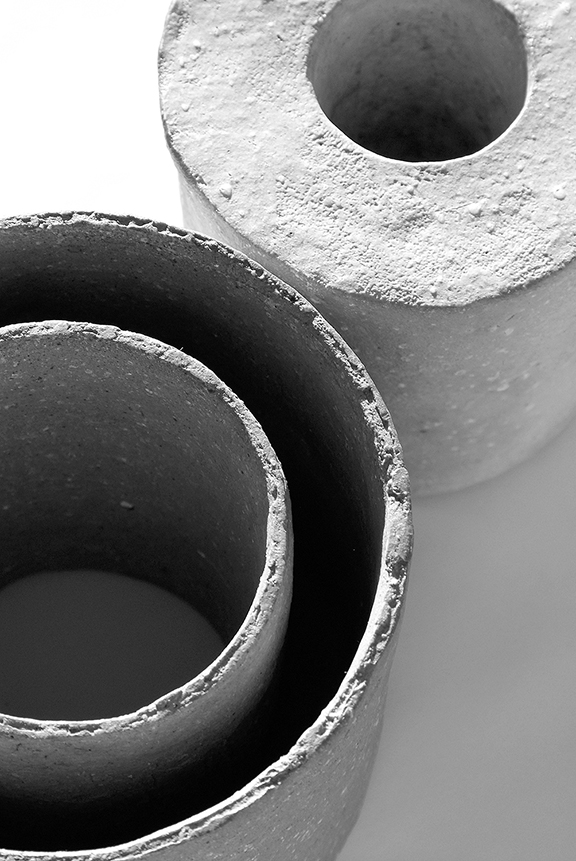
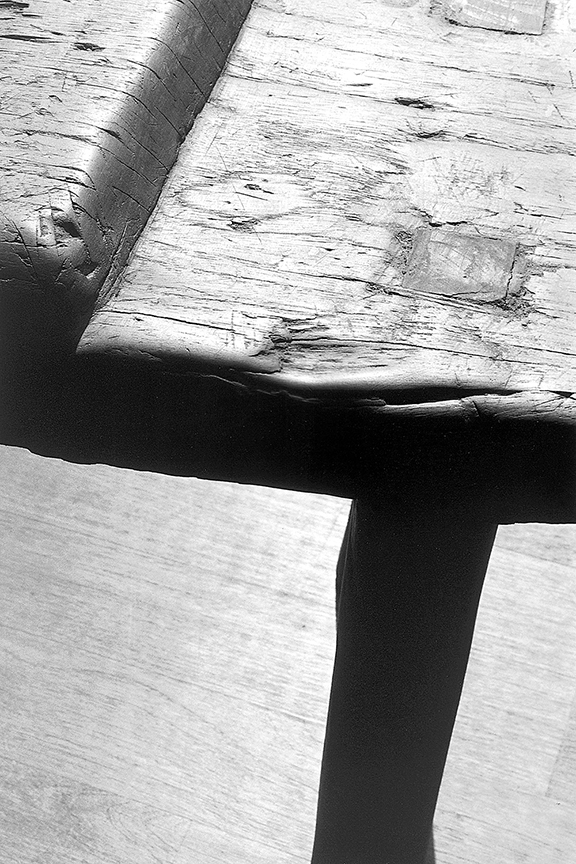
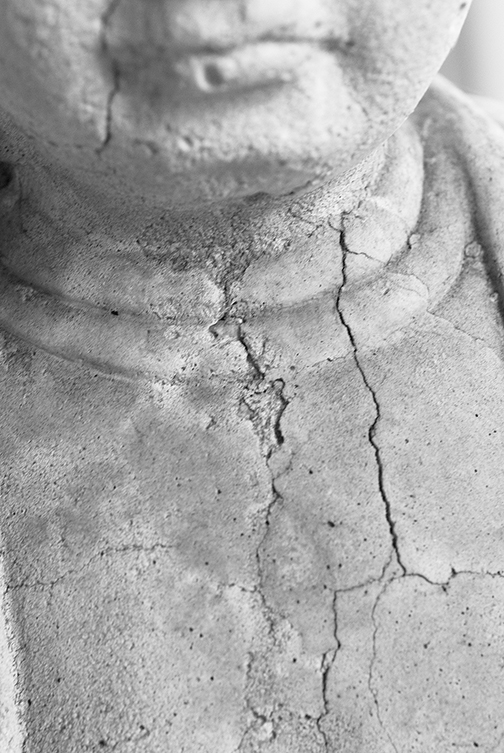
“Things wabi-sabi are often initially perceived as ugly. It is the transmutation of the not-beautiful into the beautiful that is part of the magic of wabi-sabi. Accordingly, every person finds wabi-sabi in different things and therefore applies the term in different ways,” Koren notes.
With regard to design and architecture, wabi-sabi plays a key role in both the acquisition and maintenance of design elements in the home, from antiques to finishes on wooden surfaces. Koren gives the example of an 18th century Italian desk, which upon first glance shows evidence of hundreds of years of human use and misuse, including discoloration and natural deterioration with age.
“The value of the desk is not diminished by these ‘imperfections,’” Koren says. “Rather, it is enhanced because these deviations from the perfect reveal a rich, complex history. The scars, nicks, bruises, et cetera connect the desk to a larger context: time’s passing and concomitant natural processes.”
Koren notes a few modern design methods that fit into the design aesthetic, from Corten steel, which is designed to develop a permanent rust patina, to works by the Spanish artist Antoni Tapies who sometimes uses marble dust in his paint, waste paper, string and rags.
Though the term “wabi-sabi” might not be on everyone’s design radar, Koren believes the term has gained a permanent foothold in the minds of sophisticated Western designers and architect — “even if they never explicitly use the term!”
Professor and author Mary Guzowski has a new architectural book debuting this summer entitled The Art of Architectural Daylighting. She recently sat down to discuss her interests in daylight as a building material and its importance in the architectural industry.
How can light affect the way a building is designed?
Lighting in buildings is dynamic, changing, and responsive… it’s not static. The building allows people to engage with it depending on how it’s designed — maybe walls open and close, or maybe sections of the home shut down depending on the season. Light is a literal building material.
What was your goal when writing “The Art of Architectural Daylighting?”
In the last decade there’s been a lot of new guidelines and standards, in particular a lot of new metrics around daylighting design that is more analytical. There’s a risk of ignoring the poetic aspect of daylighting. I wrote the book because I feel that it’s important to balance both.
I interviewed 18 architects and selected 12 interpretations of how to bridge the practical and poetic sides to daylighting. Each had different priorities, but there were patterns that I saw from interviews, which I structured into different categories in my book.
What about the process of putting this and the other books you’ve done do you enjoy?
I always write a book about things I want to learn about or don’t know. The most wonderful thing is talking with architects and engineers and learning how they do what they do. I love looking at patterns and trying to discern what other ideas might inform people and how I can be a channel for these patterns.
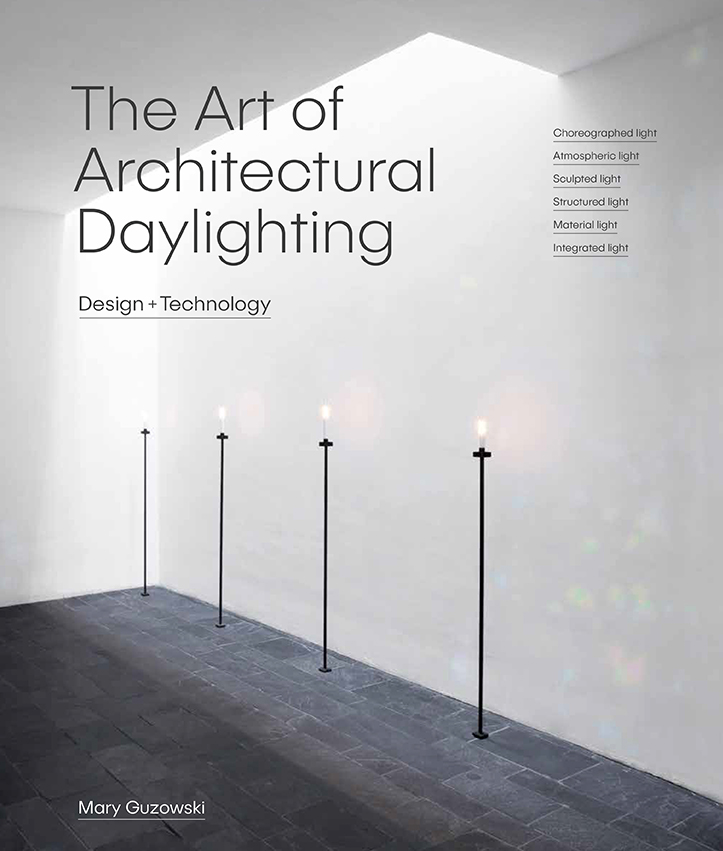
What lessons do you want readers to take from the book?
It was unanimous from all the architects that to study and understand daylighting it’s good to use physical models and put them outside, to understand the phenomenon of natural light. Many of the architects would start with small models and look inside to see how the light changed, experiment with texture and colors, then make mockups of full-scale spaces.
Guzowski has written other books regarding sustainability, including Towards Zero Energy Architecture: New Solar Design and Daylighting for Sustainable Design. She is a professor in the School of Architecture and helped design the MS in Sustainable Design at the University of Minnesota, as well as a co-author of the Carbon Neutral Design Project. The Art of Architectural Daylighting will be available for sale June 25th.
Being an innovator such a unique and artistic industry as design and architecture takes time and extraordinary effort. To showcase the innovative women making large strides in this business, CovetED Magazine recently highlighted 25 of the most influential women in both design and architecture on their blog.
Zaha Hadid
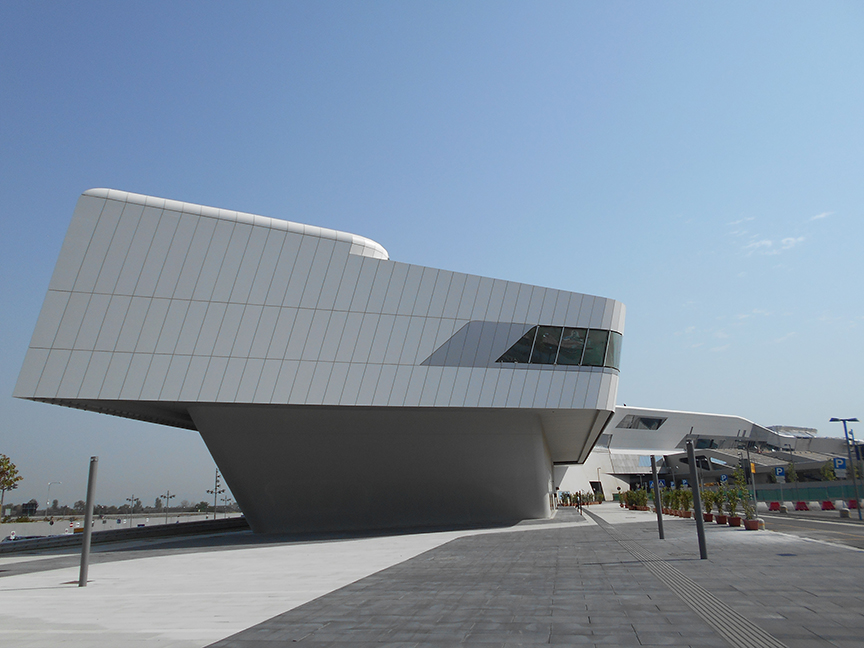
Zaha Hadid, the iconic Iranian-British architect known for her powerful, neo-futuristic creations and exemplary architecture. Though her passing in 2016 has left the world with one less imaginative spirit, her artistic views exist in her projects and their impact on those who see or benefit from them.
One of these projects includes the Napoli-Afragola high-speed train station that provides a key interchange hub for four high-speed train lines. Located only 7.5 miles from Naples, these lines will link the north and south sections of the country.
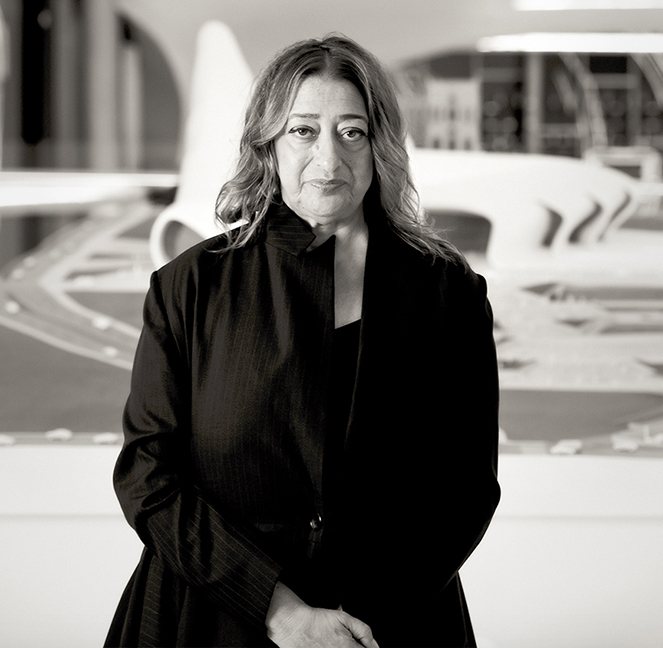
Headshot photo credit: Dmitry Ternovoy. Train station photo credit: Pivari.com
Kelly Wearstler
Interior designer Kelly Wearstler also ranks highly on the list. Known for her aesthetics in modern California luxury, Wearstler’s business has grown remarkably since the early ’90s from a boutique interior design firm to a global lifestyle brand, with designs in lighting, fabrics and furniture in both residential and commercial spaces. Artistic pieces like this gold sculpture showcase a bold, unique presence that makes a statement.
Neri Oxman
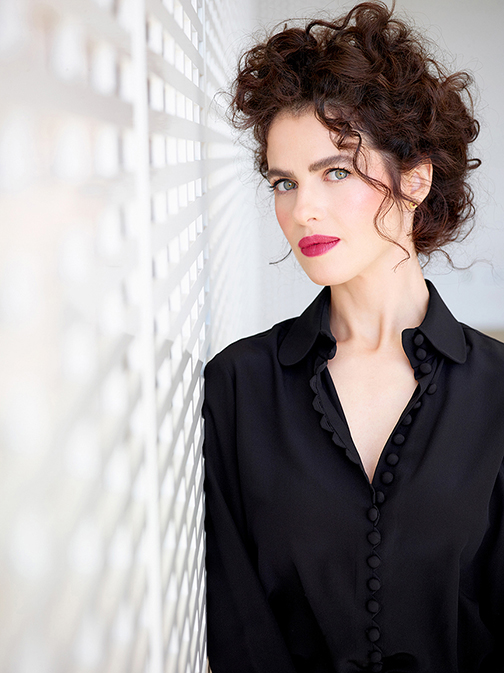
Architect, designer and inventor Neri Oxman is known for making her own statements in both the architectural and scientific fields of study. As Sony Corporation Career Development Professor and Associate Professor of Media Arts and Sciences at the MIT Media Lab, Oxman has coined the term material ecology, which considers “computation, fabrication, and the material itself as inseparable dimensions of design.
In this approach, products and buildings are biologically informed and digitally engineered by, with and for, Nature,” according to her website.
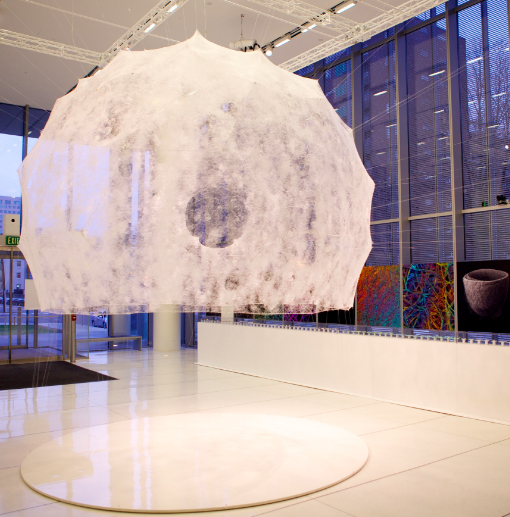
Some of Oxman’s work is included in permanent collections at the Museum of Modern Art, the Smithsonian Institute, the Boston Museum of Fine Arts and other prestigious organizations. The MIT Media Lab features one of her structures titled Silk Pavilion, created using an algorithm that replicates a silkworm’s biological silk-spinning methods.
Photos courtesy Neri Oxman.
See CovetED Magazine’s full list of 25 female innovators in the link below!
REDS is a new electric vehicle — designed by former BMW Design Chief Chris Bangle — that is crafted for long commutes and sitting in traffic.
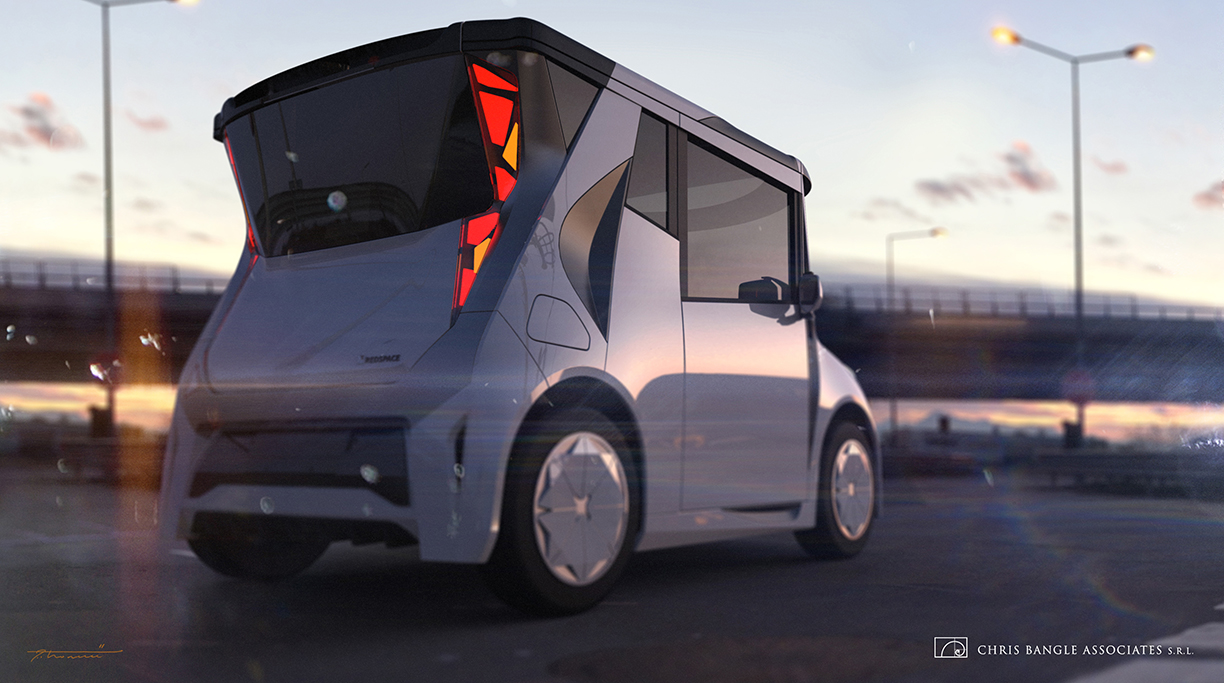
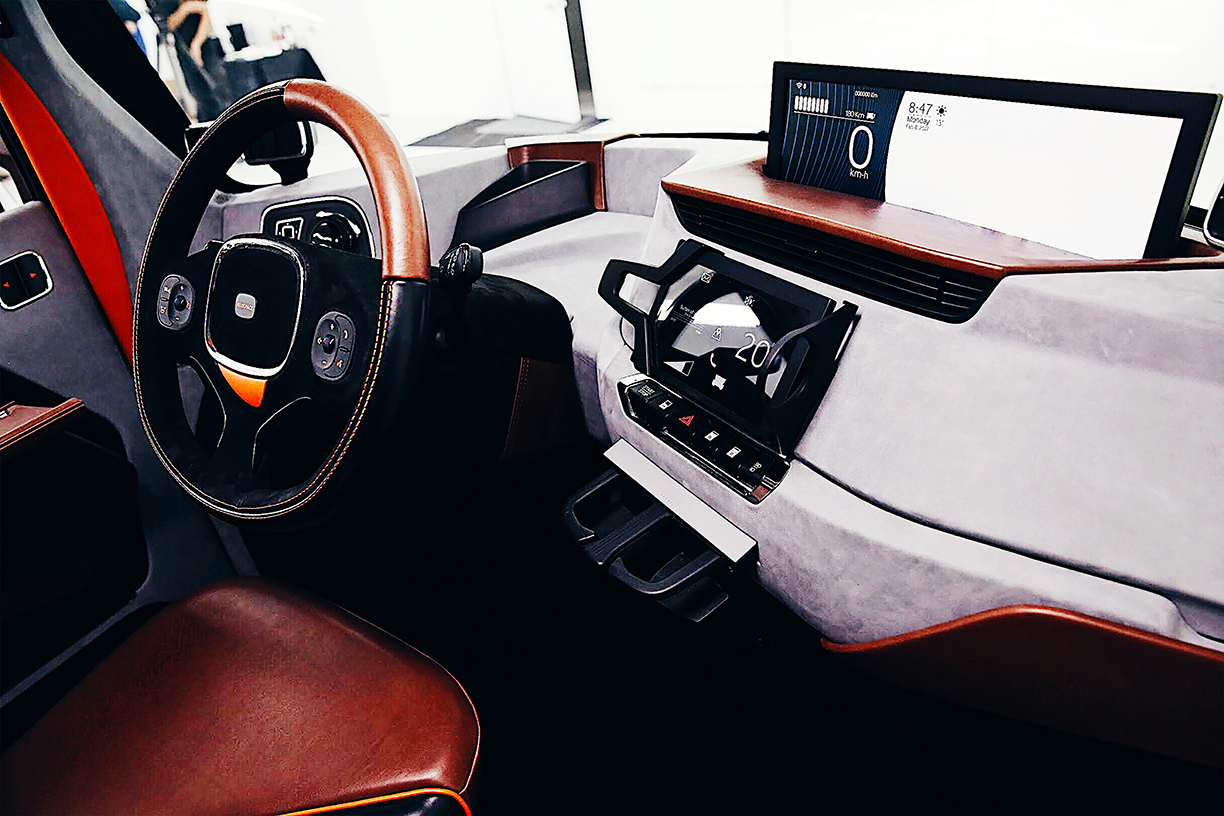
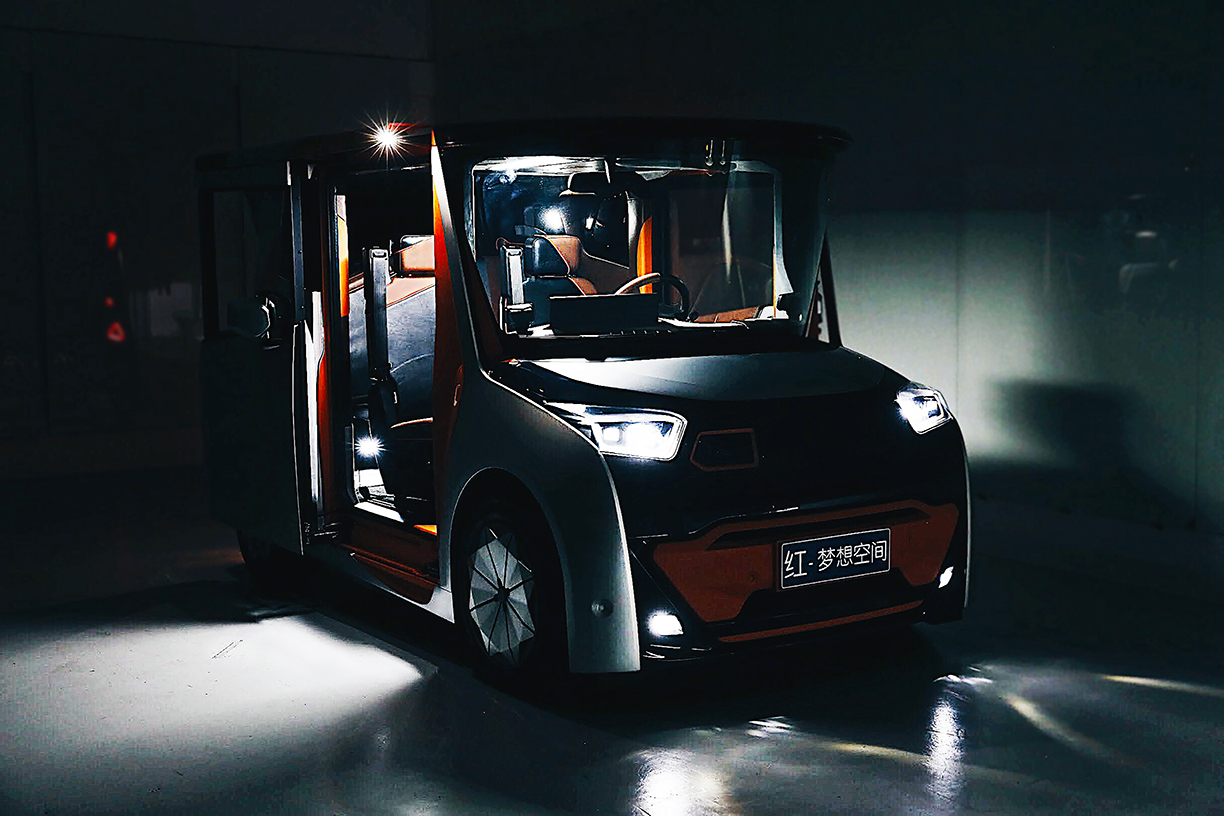
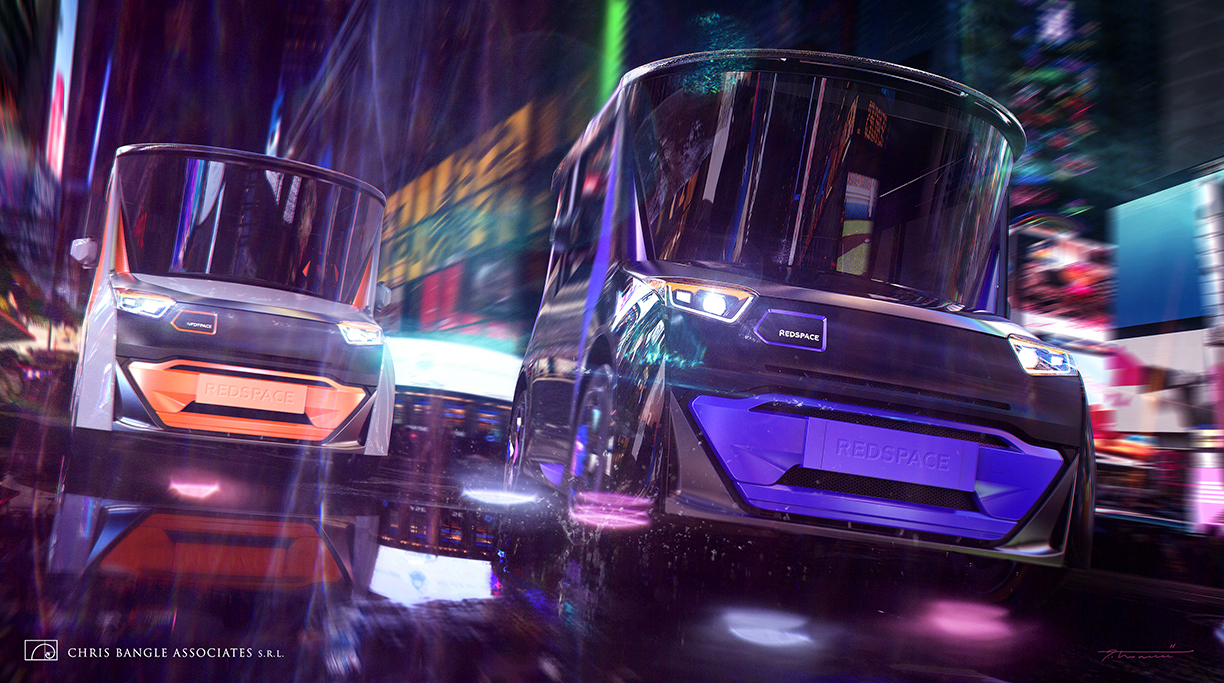

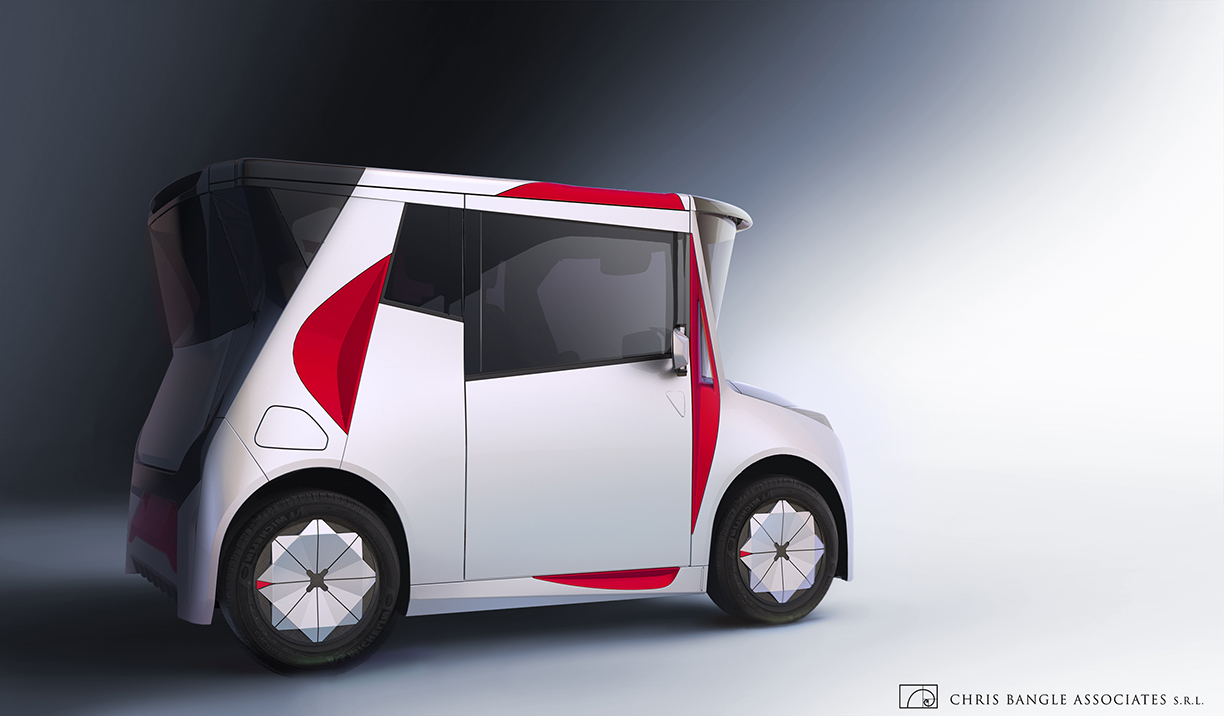
REDS is the alpha prototype of a new kind of electric vehicle that introduces a novel visual language for cars. Designed by Chris Bangle — former BMW design chief — REDS is a 2.97-meter-long city car built around a multi-layered, design-led space-use analysis. The car is conceived and crafted to get the most out of life in Chinese mega-cities, where a car is not in movement 90 percent of the time.
The China Hi-Tech Group Corporation, a commercial vehicle manufacturer, asked Chris Bangle Associates to lead a series of workshops on the future of electric vehicles in China in 2014. In 2016, CHTC began developing REDS for production with CBA providing the design. CHTC also registered REDSPACE, CHTC’s newly formed Chinese car company, to be the home of REDS.
In 2017, REDS was premiered worldwide in Los Angeles. Mr Wang Jinan, assistant president of CHTC Group and chairman of CHTC Motor, explained why they chose Los Angeles as the city to debut the new electric vehicle. “We want to know what people think about REDS and its evolution. Californians are opinion leaders in the future of mobility — this is why we present here real solutions for the real world,” he said.
REDS is an experience of layering and textual reading that challenges our notion of rhythm and perspective. At times, the interplay between elements radically changes the eye’s direction and forces the viewer to choose between perceptual interpretations. “This car is, for me, the demonstration that we can have something that is extremely emotional with immediate appeal, and at the same time highly functional and intellectually engaging,” Bangle said.
REDS represents a departure from the visual language that has been the stock and trade of car designers for generations, which is surfaces and forms that predictably blend into one another to create a contiguous whole. REDS exchanges this holistic approach to car design for one of abrupt transitions and ambiguous statements that oscillate between graphic and volumetric extremes.
The interior design of REDS arranges color and materials to enhance the idea of joyous space through images of light and shadow. Strong diagonals link the color statements from front to back in an anamorphic manner.
REDS has a reversed windshield, vertical doors and large roof. The shadowy overhang provided by the roof keeps the car cool. There is also space on the roof for a large array of solar panels — enough to drive the air conditioning without draining the battery.
The driver’s door has an armrest that is also a purse-bin, the air outlets in the instrument panel swivel 180 degrees to help defrost the windshield and the space behind the rear seat will hold a folding stroller.
The driver’s seat is a particular highlight, as it is able to fold flat or rotate 167 degrees, even when the doors are shut. REDS’ reversed windscreen allows the steering wheel to fold forward and give the driver’s seat space to change and orient itself backwards. In this position, the occupants can face each other, creating a convivial atmosphere and allowing them to enjoy each other’s company without being forced to speak over their shoulders.
The person in the passenger seat can enjoy the commanding view from the front and have their feet massaged by the built-in unit in the carpet or stretch out in the luxurious comfort of row two. REDS is also the first car that can actually claim to have a wrap around loveseat.
The mobility and shape of the seats promotes a socializing atmosphere around working, chatting, watching films or playing video games on the large 17 inch screen that emerges from the instrument panel.
Photos courtesy of Chris Bangle Associates
Kettal’s outdoor decoration collection includes a wide variety of products, ranging from planters and fire pits to floor lamps and side tables.
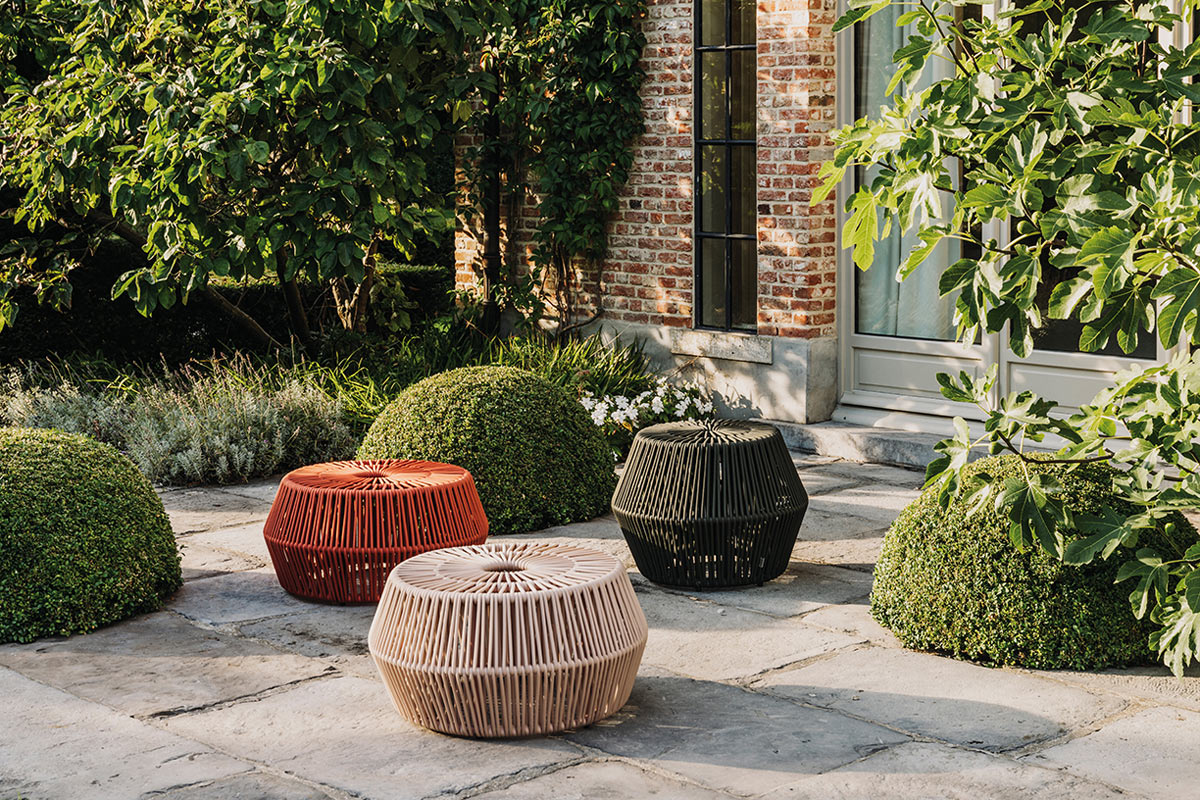

Kettal, a designer and manufacturer of timeless outdoor furnishings for home and commercial uses, has developed a range of exterior decoration and design products in its new puff design and rope collection, Kettal Objects.
Kettal Objects is a range of outdoor decoration products, which includes puffs, planters, fire pits and oil lamps designed by Emiliana Design Studio. Emiliana Design Studio was set up by Ana and Emili in Barcelona in 1996 after they graduated from London’s Central Saint Martins College of Art and Design. Their work is characterized by its ability to give each project a fresh conceptual approach, experimentation with materials and for proactively involving the user without compromising functional, technical or production aspects.
Kettal has extended its new collection with the introduction of a new puff, constructed of aluminum and one of the ‘Bela Ropes’ 17-color rope range designed by Doshi Levien. Doshi Levien is an internationally acclaimed design studio founded by designers Nipa Doshi and Jonathan Levien. The two designers have been working together for more than ten years in their London-based design studio.
The Kettal Objects collection also includes a sideboard, room divider, floor lamp, parasols, side table and tray by Kettal Studio, an oil lamp and fire pit by Emiliana Design Studio, candleholders and outdoor rugs (200 x 294 cm) by Patricia Urquiola, rugs (200 x 300 cm and 300 x 400 cm), terrain cushions and geometrics fabrics by Doshi Levien and three models of lamp — floor, table and battery-powered — by Michel Charlot.
Photos courtesy of Kettal


